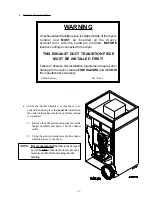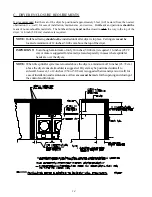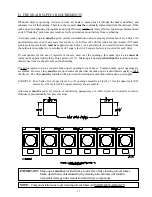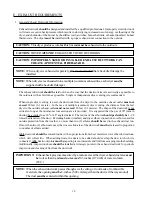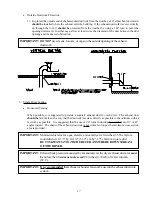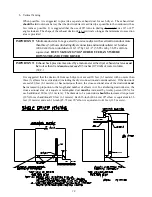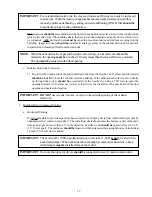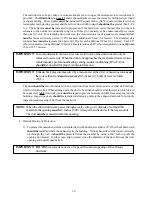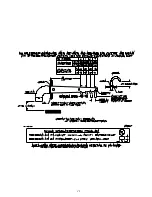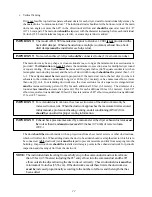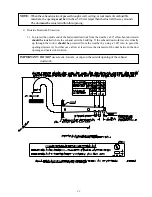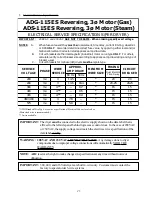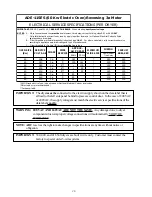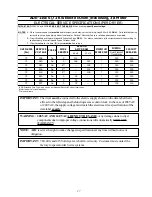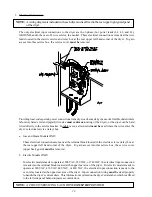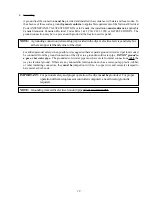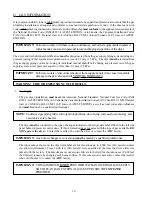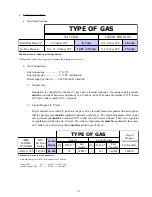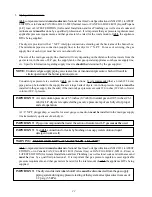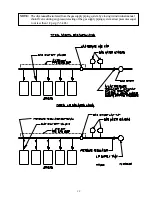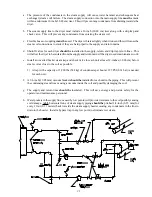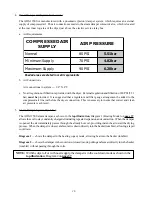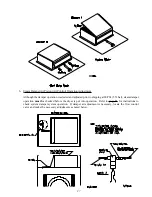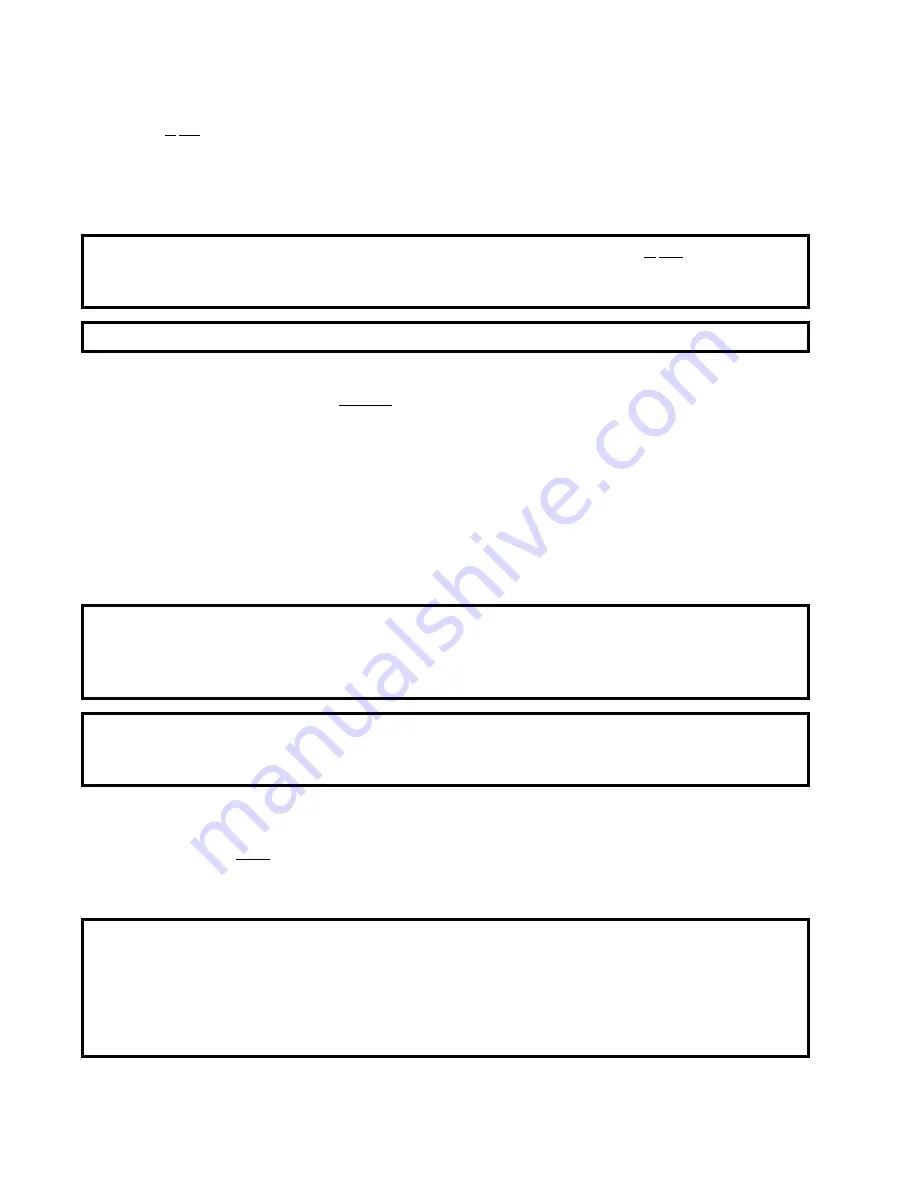
22
c. Vertical Venting
If it is not feasible to provide separate exhaust ducts for each dryer, ducts from individual dryers may be
channeled into a “common main duct.” The individual ducts should enter the bottom or side of the main
duct at an angle not more than 45° in the direction of airflow and
should be
spaced at least 46-1/8”
(117.16 cm) apart. The main duct
should be
tapered, with the diameter increasing before each individual
14-inch (35.56 cm) (minimum for gas, electric, or steam dryers) duct is added.
IMPORTANT:
The model AD-115ES manufactured prior to October 1, 2001
is not
provided with a
back draft damper. When exhausted into a multiple (common) exhaust line, a back
draft damper
must be
installed at each dryer duct.
IMPORTANT:
No more than three (3) dryers
should be
connected to one (1) main common duct.
The main duct may be any shape or cross-sectional area, so long as the minimum cross section area is
provided. The
illustration
on
page 23
shows the minimum cross section area for multiple dryer round
or square venting. These figures
must be
increased 10 square inches (64.52 square centimeters) when
rectangular main ducting is used, and the ratio of duct width to depth
should not be
greater than 3-1/2
to 1. These figures
must be
increased in proportion if the main duct run to the last dryer to where it
exhausts to the outdoors is unusually long (over 20 feet [6.1 meters]) or has numerous elbows (more
than one [1]) in it. In calculating ductwork size, the cross section area of a square or rectangular duct
must be
increased twenty percent (20%) for each additional 20 feet (6.1 meters). The diameter of a
round exhaust
must be
increased ten percent (10%) for each additional 20 feet (6.1 meters). Each 90°
elbow is equivalent to an additional 30 feet (9.14 meters) and each 45° elbow is equivalent to an additional
15 feet (4.57 meters).
IMPORTANT:
For extended ductwork runs, the cross section area of the ductwork can only be
increased to an extent. When the ductwork approaches the maximum limits as noted
in this manual, a professional heating, venting, and air conditioning (HVAC) firm
should be
consulted for proper venting information.
IMPORTANT:
Exhaust back pressure measured by a manometer at the dryer exhaust duct area
must
be
no less than 0 and
must not exceed
0.3 inches (0.74 mb) of water column
(W.C.).
The duct
should be
smooth inside with no projections from sheet metal screws or other obstructions,
which will collect lint. When adding ducts, the duct to be added should overlap the duct to which it is to
be connected.
ALL
ductwork joints
must be
taped to prevent moisture and lint from escaping into the
building. Inspection doors
should be
installed at strategic points in the exhaust ductwork for periodic
inspection and cleaning of lint from the ductwork.
NOTE:
The individual ducts traveling from each dryer up to the common duct must not travel more
than 15 feet (4.57 meters) including the 45° entry elbow into the common duct and the 90°
elbow outside the dryer allowing the duct to travel vertically. These individual ducts
must be
a
minimum of 14-inches (35.56 cm). If the ductwork exceeds these limits, the ductwork size
must be
increased proportionally according to the number of elbows and the length that has
been added.
Summary of Contents for AD-115ES II
Page 25: ...21 ...






